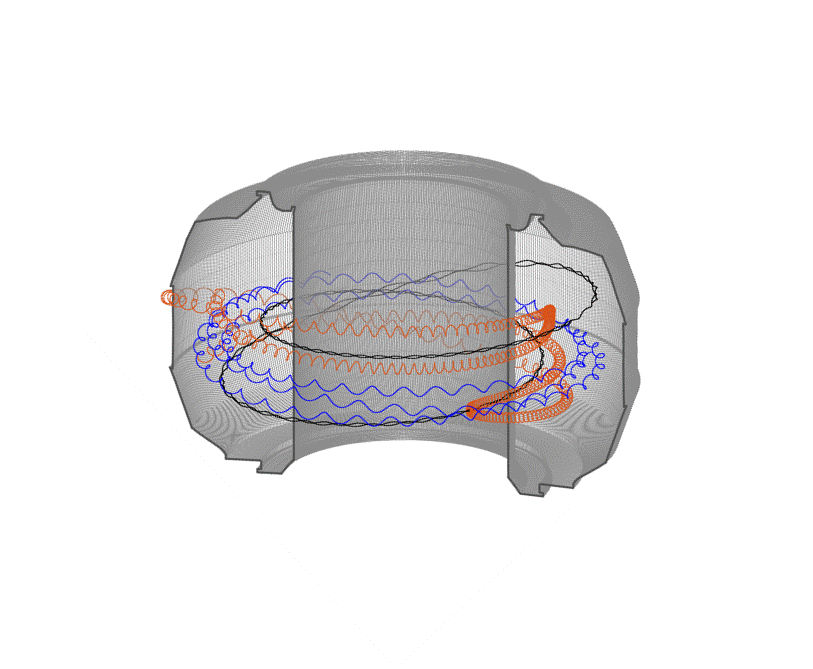
Filter News
Area of Research
- Advanced Manufacturing (4)
- Biological Systems (2)
- Biology and Environment (49)
- Clean Energy (61)
- Computational Biology (2)
- Computational Engineering (1)
- Computer Science (6)
- Electricity and Smart Grid (2)
- Fuel Cycle Science and Technology (1)
- Fusion and Fission (15)
- Fusion Energy (11)
- Isotopes (1)
- Materials (21)
- Materials for Computing (5)
- National Security (36)
- Neutron Science (9)
- Nuclear Science and Technology (8)
- Quantum information Science (2)
- Sensors and Controls (1)
- Supercomputing (44)
News Type
News Topics
- (-) Bioenergy (67)
- (-) Composites (17)
- (-) Coronavirus (28)
- (-) Fusion (40)
- (-) Grid (46)
- (-) Machine Learning (33)
- (-) National Security (42)
- (-) Polymers (17)
- (-) Summit (37)
- 3-D Printing/Advanced Manufacturing (73)
- Advanced Reactors (21)
- Artificial Intelligence (61)
- Big Data (44)
- Biology (78)
- Biomedical (40)
- Biotechnology (15)
- Buildings (39)
- Chemical Sciences (36)
- Clean Water (27)
- Climate Change (72)
- Computer Science (127)
- Critical Materials (16)
- Cybersecurity (17)
- Decarbonization (55)
- Education (1)
- Emergency (2)
- Energy Storage (60)
- Environment (148)
- Exascale Computing (28)
- Fossil Energy (5)
- Frontier (26)
- High-Performance Computing (56)
- Hydropower (11)
- Irradiation (2)
- Isotopes (32)
- ITER (5)
- Materials (78)
- Materials Science (80)
- Mathematics (9)
- Mercury (10)
- Microelectronics (2)
- Microscopy (31)
- Molten Salt (6)
- Nanotechnology (28)
- Net Zero (10)
- Neutron Science (74)
- Nuclear Energy (74)
- Partnerships (20)
- Physics (34)
- Quantum Computing (25)
- Quantum Science (40)
- Renewable Energy (1)
- Security (12)
- Simulation (39)
- Software (1)
- Space Exploration (22)
- Statistics (2)
- Sustainable Energy (92)
- Transformational Challenge Reactor (3)
- Transportation (62)
Media Contacts

Oak Ridge National Laboratory scientists have devised a method to control the heating and cooling systems of a large network of buildings for power grid stability—all while ensuring the comfort of occupants.

Fusion scientists from Oak Ridge National Laboratory are studying the behavior of high-energy electrons when the plasma that generates nuclear fusion energy suddenly cools during a magnetic disruption. Fusion energy is created when hydrogen isotopes are heated to millions of degrees...

Oak Ridge National Laboratory scientists have developed a crucial component for a new kind of low-cost stationary battery system utilizing common materials and designed for grid-scale electricity storage. Large, economical electricity storage systems can benefit the nation’s grid ...

An Oak Ridge National Laboratory–led team has developed super-stretchy polymers with amazing self-healing abilities that could lead to longer-lasting consumer products.
Scientists at Oak Ridge National Laboratory have conducted a series of breakthrough experimental and computational studies that cast doubt on a 40-year-old theory describing how polymers in plastic materials behave during processing.

Nuclear physicists are using the nation’s most powerful supercomputer, Titan, at the Oak Ridge Leadership Computing Facility to study particle interactions important to energy production in the Sun and stars and to propel the search for new physics discoveries Direct calculatio...

The same fusion reactions that power the sun also occur inside a tokamak, a device that uses magnetic fields to confine and control plasmas of 100-plus million degrees. Under extreme temperatures and pressure, hydrogen atoms can fuse together, creating new helium atoms and simulta...

With the licensing to Enchi Corporation of a microbe custom-designed to produce ethanol efficiently, Oak Ridge National Laboratory (ORNL) and the BioEnergy Science Center (BESC) mark the culmination of 10 years’ research into ways to improve biofuels production. Enchi ha...

A new manufacturing method created by Oak Ridge National Laboratory and Rice University combines 3D printing with traditional casting to produce damage-tolerant components composed of multiple materials. Composite components made by pouring an aluminum alloy over a printed steel lattice showed an order of magnitude greater damage tolerance than aluminum alone.

It’s been 10 years since the Department of Energy first established a BioEnergy Science Center (BESC) at Oak Ridge National Laboratory, and researcher Gerald “Jerry” Tuskan has used that time and the lab’s and center’s resources and tools to make good on his college dreams of usi...


